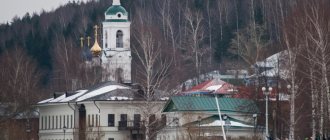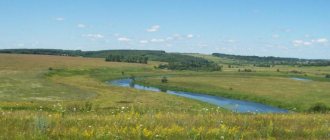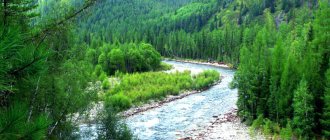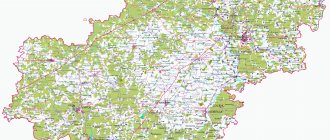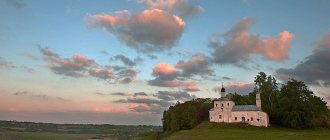The Astrakhan region is one of the southern regions of Russia. If you look at a map of the Astrakhan region from a satellite, its borders are easily determined. The territory of this region occupies about 49 thousand km2 and borders the world's largest lake - the Caspian Sea. The region is located between Kazakhstan, Kalmykia and the Volgograd region.
The main bodies of water in the region are the Caspian Sea and the Volga River. In addition to large bodies of water, there are about 900 salt and freshwater lakes in the region. The diverse flora and fauna made it possible to create 35 natural monuments and 5 national reserves in the region.
Geographically, the Astrakhan region includes 11 districts. The administrative center is the city of Astrakhan. More than 1 million people live in the Astrakhan region, almost 2/3 of the population are urban residents and only 1/3 live in villages and villages. To view the map of the Astrakhan region in the form of a diagram, you can use the mode switch in the upper right corner.
What holiday is it today?
December 16, 2021, Thursday
Today are holidays, events: Events that happened on December 16 in the world, in different years Tomorrow: Day of Strategic Missile Forces Day of Employees of the State Courier Service Memorable date in the military history of Russia: Capture of the Ochakov fortress in 1788
Today is the Orthodox holiday of the Prophet Zephaniah. Reverend Savva of Storozhevsky, Zvenigorod. Martyr Angelis... Tomorrow: Great Martyr Barbara and Martyr Juliania of Iliopolis. Venerable John of Damascus...
Today is a national holiday: Day of World Silence and Silence... Tomorrow: Barbarian Day...
Seasons
Seasons, four periods of the year (spring, summer, autumn and winter) characterized by certain average temperatures. The period during which the Sun passes through one of these sectors is called the season. Spring in the Northern Hemisphere and autumn in the Southern Hemisphere begin when the Sun passes through the initial circle of declination and its right ascension is 0° (vernal equinox). Summer in the Northern Hemisphere and winter in the Southern Hemisphere occur when the sun's right ascension is 90° (summer solstice). Autumn in the Northern Hemisphere and spring in the Southern Hemisphere begin when the sun's right ascension is 180° (autumnal equinox). The beginning of winter in the Northern Hemisphere and summer in the Southern Hemisphere is considered to be the winter solstice, when the direct ascension of the Sun is 270°... Next: Seasons. Russian folk calendar. Monthly words...
see also
- Astrakhan region
- Symbols and landmarks of the Astrakhan region
- Cities of Russia
| [ + ] Cities by regions of Russia | |
| Cities of the North-West (NWFD) | St. Petersburg (and its cities) • Leningrad region (historical Staraya Ladoga) • Arkhangelsk region • Vologda region • Kaliningrad region • Karelia • Komi • Murmansk region • Nenets Autonomous Okrug • Pskov region |
| Cities of the Volga region (Volga Federal District) | Bashkortostan • Volgograd region • Kalmykia • Kirov region • Mari El • Mordovia • Nizhny Novgorod region • Orenburg region • Penza region • Perm region • Samara region • Saratov region • Tatarstan • Udmurtia • Ulyanovsk region • Chuvashia |
| Cities of Southern Russia (SFD) | Sevastopol (including Inkerman) • Republic of Crimea • Adygea • Astrakhan region • Krasnodar region • Rostov region |
| Cities of the North Caucasus (NCFD) | Dagestan • Ingushetia • Kabardino-Balkaria • Karachay-Cherkessia • North Ossetia - Alania • Stavropol Territory • Chechen Republic |
| Cities of the Urals (Ural Federal District) | Kurgan region • Sverdlovsk region • Tyumen region • Khanty-Mansi Autonomous Okrug - Yugra • Chelyabinsk region • Yamalo-Nenets Autonomous Okrug |
| Cities of Siberia (Siberian Federal District) | Altai Republic • Altai Territory • Irkutsk Region • Kemerovo Region • Krasnoyarsk Region • Novgorod Region • Novosibirsk Region • Omsk Region • Tomsk Region • Tyva • Khakassia |
| Cities of the Far East (FEFD) | Amur Region • Buryatia • Jewish Autonomous Region • Trans-Baikal Territory • Kamchatka Territory • Magadan Region • Primorsky Territory • Sakha (Yakutia) • Sakhalin Region • Khabarovsk Territory • Chukotka Autonomous Region |
| see also | Cities of the DPR, LPR, Transnistria, South Ossetia • Regions of Russia • Cities of Russia |
Folk calendar about every day
Every day one season always replaces another and this determines a person’s way of life. In connection with this, a folk calendar was formed in which there were practically no nameless, unmarked days. Every day was special, had its own purpose. All this was determined by climate conditions and astrological phenomena.
A calendar is a system for counting periods of time. The first calendars arose a long time ago, in ancient times, because there was a need to measure time. The word calendar comes from the Latin words caleo - to proclaim and calendarium - debt book. This is due to the fact that in Ancient Rome the beginning of each month was especially proclaimed, and because it was customary to pay debts on the first day of the month. Different peoples counted time differently. Some calendars are based on the changing phases of the moon - lunar calendars; in others - the change of seasons - sunny; in others, the length of the year was coordinated with the change of seasons, and the counting of months was associated with the phases of the Moon. Such calendars are called lunisolar.
In Rus', the calendar was called a monthly calendar. Every day, the month book covered the entire year of peasant life, “describing” day by day, month after month, where each day had its own holidays or weekdays, customs and superstitions, traditions and rituals, natural signs and phenomena. The cyclical nature of the calendar is reminiscent of human life, where spring is youth, summer is heyday, autumn is the time of harvesting fruits (it’s good if there are some, otherwise you can live your life without collecting fruits), winter is the time of wisdom and peace. This cyclicality and rhythm determined the way of life of the farmer. The folk calendar was an agricultural calendar, which was reflected in the names of the months, folk signs, rituals and customs. Even the determination of the timing and duration of the seasons is associated with real climatic conditions. Hence the discrepancy between the names of the months in different areas... Next: Folk calendar...
Cities[ | ]
| № | Name | district / ZATO / city of regional significance[4] | population (persons) | founding/first mention | city status | coat of arms |
| 1 | Astrakhan | Astrakhan | ↘524 371[3] | 1558 | 1717 | |
| 2 | Akhtubinsk | Akhtubinsky district | ↘36 127[3] | 1793 | 1959 | |
| 3 | Znamensk | Znamensk, ZATO | ↘26 361[3] | 1948 | 1962 | |
| 4 | Kamyzyak | Kamyzyaksky district | ↗15 753[3] | 1560 | 1973 | |
| 5 | Narimanov | Narimanovsky district | ↘10 601[3] | 1963 | 1984 | |
| 6 | Kharabali | Kharabalinsky district | ↘17 338[3] | 1789 | 1974 |
Fishing calendar for every day
The fishing calendar should not be taken as an absolutely indisputable truth. Fish biting is greatly influenced by a whole range of natural factors, as well as the influence on the nature of man himself. You must not forget that the fish’s bite depends and is determined not only by the calendar dates and biological cycles of their life, reflected in the calendar, but also, no less, by the state of their habitat; the bite also depends on weather conditions: air and water temperatures, cloudiness, wind direction and strength, etc... Next: Fishing calendar...
Urban settlements
- Liman
Population 8,266 (2020).
- Verkhniy Baskunchak
Population 7,493 (2020).
- Red Barricades
Population 6,397 (2020).
- Ilyinka
Population 5,076 people (2020).
- Nizhny Baskunchak
Population 2,401 (2020).
- Volga-Caspian
Population 2,242 (2020).
- Kirovsky
Population 2064 people (2020).
Orthodox calendar about every day
Orthodox calendar: Orthodox, Church and Christian holidays.
The church year is an alternation of weekdays and holidays. On weekdays, a person is called to work “by the sweat of his brow to earn his bread.” Holidays are given in order to feel liberation, to rise above the bustle and routine of the world, to feel involved in the highest of worlds, “where there are no illnesses, sorrows and sighs, but endless life.” Since ancient times, holiday cycles have been associated with the seasons. The pagans associated them with the worship of the forces of nature, the cult of which in the Old Testament was replaced by gratitude to the Creator for the universe. And although the connection between holidays and the seasons has not completely lost its power, since God is present in everything, in the plant and animal world, in human works, it nevertheless faded into the background, giving way to a spiritual foundation built on the Sacred Scriptures. The history of Orthodox holidays dates back to the times of the Old Testament. Each of the Orthodox holidays is dedicated to the remembrance of the most important events in the life of Jesus Christ and the Mother of God, as well as the memory of saints... Next: Orthodox calendar...
Population
B. h. population of A. o. are Russians (70%, 2002 census), Kazakhs (14.2%) and Tatars (7%, including Astrakhan Tatars 0.2%). Other groups include Ukrainians (1.3%), Chechens (1%), Azerbaijanis (0.8%), Kalmyks (0.7%), Armenians (0.6%), Nogais (0.5%), Avars (0.4%), Lezgins (0.4%), Dargins (0.4%). Since 1997 it has been characterized by natural population decline: mortality (15 per 1000 inhabitants, 2004) exceeds the birth rate (12.4 per 1000 inhabitants); infant mortality rate 12.6 per 1000 live births (2003). The share of women is 53%. The share of the population under working age (up to 16 years) is 19.1%, over working age 18.5%. In 2003, life expectancy was 65.4 years (men - 59.2, women - 72.2). Since the 1990s The region was characterized by a steady migration influx of population, mainly from former countries USSR, which practically ceased in 2003 (migration growth rate -1 per 10 thousand inhabitants). Wed. density of us. 22.6 people/km2. The Volga delta is the most densely populated. Gor. us. 67.0% (2005; 68.0% in 1989, 52% in 1959). St. 1/2 of us. region and approx. 3/4 of the townspeople live in Astrakhan (501.3 thousand people, 2005). Dr. significant cities (2005, thousand people): Akhtubinsk (44.2), Znamensk (32.1).
Russian folk calendar for every day
The word “sign” comes from the word “notice”, i.e. observe. As a result of observing what happens around a person every day, he accumulates life experience. This knowledge was passed down from generation to generation, carefully preserved and people trusted it as a sacred book. Many signs have come to us from the depths of centuries without losing their knowledge. Each of us is free to choose: to dismiss all this as an absurd superstition or to take a closer look at the signs and take the centuries-old experience of generations more seriously. Most of us, when taking exams, ask them to scold them, boasting about some kind of good fortune or luck, spit so as not to jinx them or knock on wood, take a detour if a black cat crossed the road, are afraid of the number 13 and much more. And who among us does not have lucky things, numbers? Who has never resorted to the help of fate at least once in their life, who has not believed in secrets? It’s as if everything connected with signs is hidden somewhere deep in our subconscious. Often we remember them mechanically, unconsciously, or just as a joke. But, undoubtedly, the signs contain a lot of accurate knowledge and practical wisdom of our ancestors. They cover all the characteristic, often difficult to perceive, natural phenomena. Signs have preserved a lot of what was in old folk holidays and customs; they help predict the weather, grow crops... Next: Folk signs...
General information about the Astrakhan region
Distinctive features .
If there was a competition for the main symbol of the Astrakhan region, then the absolute winner would be... black caviar. Indeed, it is difficult to imagine a more Astrakhan product. Sturgeon caviar has become a delicacy not only in Russia. Unfortunately, the sturgeon population in the Caspian Sea is melting before our eyes, and prices for caviar have risen to such limits that even Astrakhan old-timers recall with nostalgia past times when any local resident could afford it. The Astrakhan region is also famous for other food products, for example, watermelons. The region is also a Mecca for hunters and fishermen - the conditions here are the best for this.
Astrakhan watermelons are considered one of the largest berries in the world
If we move from gastronomic issues to the historical past, then the Astrakhan region has a particularly rich and rich one. It is believed that the capital of the Khazar Khaganate, Itil, was located here. After the defeat of the Khazars, the Polovtsians began to dominate these lands (yes, with whom Prince Igor fought), and then they were ousted by the Tatars, who created the Astrakhan kingdom here. Then these lands were annexed to Russia, and from the old “tsarist” times only the crown on the coat of arms of Astrakhan remained.
Today in the Astrakhan region, in addition to developed agriculture, there are large enterprises in shipbuilding, mechanical engineering, fuel and food industries. In addition, the largest Astrakhan gas condensate field in the European part of Russia is located here, instilling confidence in the stable future of the region.
Geographical location . The Astrakhan region is located in the southeastern part of the East European Plain, at the mouth of the Volga River, which, as you know, flows into the Caspian Sea. In the southeast, the Astrakhan region borders with Kalmykia, in the north - with the Volgograd region, in the east - with the Republic of Kazakhstan.
The Caspian flotilla is always ready to protect the southern borders of our homeland
Despite its small area, the Astrakhan region is distinguished by a variety of landscapes. Since it is located in the eastern part of the Caspian lowland, here we see deserts and semi-deserts, as well as the green Volga delta. Separately, it is worth mentioning the salt lake Baskunchak with a unique landscape. There is an abundance of healing mud here, which makes Baskunchak a promising resort.
Salt lake Baskunchak - the Russian analogue of the Dead Sea
The population of the Astrakhan region is 1,013,840 people. Surprisingly, there is complete stability here in the Astrakhan region. The number of residents has remained virtually unchanged for 20 years. It is in other regions that people, like birds, fly to foreign lands in search of a better life or, on the contrary, experience an influx of migrants from different parts of our Motherland. And in the Astrakhan region, people seem to have grown to the earth, which waters and feeds them. And the situation with natural population growth is quite good: +2.5 people. per thousand inhabitants - many regions can only dream about this for now.
In terms of ethnic composition, Russians predominate in the Astrakhan region (61.2%). In second place are Kazakhs (14.79%). In third are the Tatars (5.99%). Moreover, in Astrakhan itself there are an overwhelming majority of Russians. Kazakhs live in large numbers in the Volodarsky and Krasnoyarsk regions, Tatars live in the Narimanovsky and Privolzhsky regions.
Crime . According to statistics, the Astrakhan region is considered one of the most criminal regions of Russia. In terms of the number of crimes committed, it is in fourth place. Murders and robberies occur here quite often, so it is not recommended to walk here at night, especially alone.
But we must also take into account that criminal statistics are greatly spoiled by poachers. Sturgeon and black caviar are very valuable products that attract illegal fishing enthusiasts. And although the fight against them is ongoing, it is difficult for law enforcement officers to resist the much better armed and equipped poachers.
The unemployment rate in the Astrakhan region is approximately 1.5 times higher than the Russian average. In 2012, its level was 7.91%. Unfortunately, the region's food industry is experiencing a decline due to the fact that commercial fish stocks in the Caspian Sea are declining. True, there are large enterprises in the fuel industry here that provide decent salaries to their employees (at the level of 60 thousand rubles per month). In other industries everything is much more modest. The average salary level in the Astrakhan region is 19,217 rubles, which is far from the lowest figure for the regions of the Russian center.
Property value. The average price per square meter in Astrakhan is 38.8 thousand rubles. But the lower price level for apartments starts much earlier - from 25 thousand rubles. Here you can find offers of one-room apartments at a price of both 500 thousand and 800 thousand rubles. Two-room apartments are offered starting from 1.4 million rubles and above.
The climate of the Astrakhan region is dry, continental. There is very little precipitation here - about 200 mm per year. Cold air masses from the east bring a frosty winter, with an average January temperature of −10°C. But sometimes the thermometer in winter can show minus thirty below zero. In July, the average temperature is +24...25°C, and the air is very dry. This leads to high evaporation and more precipitation, although in this regard the Astrakhan region is far from the same steppe regions of Ukraine, where it rains much more often in summer than here.
Holiday calendar, dates and events of the year
All state and professional holidays in Russia, including significant World and International holidays, and other equally interesting holidays and events about every day.
The holiday has always kept pace with the history of mankind. Social time can be divided into three types: everyday life (weekdays), weekends and holidays. Everyday life is a series of practices repeated day after day and every day (work). Weekends are regular breaks from the rush of everyday life. It is believed that on weekends a person should restore his strength after working days. Day off, non-working day. A holiday is a day of celebration established in honor or in memory of someone or something. A day or series of days celebrated by the church in memory of a religious event or saint... Next: Calendar...
Prayer book, Orthodox prayers for every day
Prayer is the most powerful means for healing all illnesses - both physical and mental. Prayers can be laudatory or grateful, petitionary and repentant. If we have offended God, sinned, we must ask Him for forgiveness, that is, repent. Such prayers are called repentant prayers. If everything is fine with us, if we and our loved ones are healthy and prosperous, if we have a place to live, something to wear, something to eat, we must glorify and thank God for this. Such prayers are called praise or thanksgiving. If some misfortune, illness, trouble or need happens, you need to ask God for help. Such prayers are called petitionary... Next: Orthodox prayers...
Zodiac, astrological, eastern calendar. Zodiac signs
In ancient times, to establish the calendar, priests used knowledge of the positions of all the planets. Before the reform of Peter 1, the New Year was celebrated on the Day of the Autumn Equinox. On this day, according to ancient legend, the most peaceful treaty was concluded between the Great Race (ancient Slavs) and the Great Dragon (ancient Chinese) and it was approximately 7518 years ago... For the ancient Slavs, the calendar month corresponded to the lunar cycle from new moon to new moon, taking into account such Thus, the relationship of the entire annual cycle with astronomical and natural phenomena. There was no coherent calendar system. The main natural phenomena are still considered to this day to be the days of the solar equinox and solstice - the Slavic holidays Maslenitsa, Kupala, Ovsen and Kolyada. But during the time of Peter 1, all ancient Slavic calendars were abolished and a new Western European calendar from the Nativity of Christ (Julian calendar) was introduced, while the beginning of the calendar was moved to January 1. The Julian calendar (old style) did not take leap days into account and accumulated one extra day every 128 years. After the October Revolution in 1918, the Gregorian calendar (new style) was introduced in Russia, according to which an amendment of 13 days was introduced. The calendar of the ancient Slavs was based on two planets: the Sun and the Moon. And now they don’t use anything at all. The calendar has become static. There is no such thing as the calendar, it turns out, resting on some planet. Nobody even knows about it. There are just some standard numbers, there are months and holidays. The calendar is based on the Sun and Moon. Why is this so? Because these two luminaries influence the Earth. The Earth revolves around the Sun, and the Moon revolves around the Earth. And these two luminaries create the atmosphere on the planet. From here the calendar is built... Next: Astrological calendar...
Cities of the Astrakhan region
Astrakhan (527,345 people) is the administrative center of the region, which has a rich history. Among the attractions, it is worth highlighting the Astrakhan Kremlin, the Assumption and Trinity Cathedrals, as well as many preserved ancient merchant buildings. The city has many industrial enterprises and a well-developed infrastructure. Among the disadvantages, it is worth noting high unemployment, poor ecology and crime.
Until recently, sturgeon was sold in Astrakhan markets as easily as an ordinary roach.
Akhtubinsk (39.4 thousand people) is the second largest city in the Astrakhan region, located in its northern part, on the banks of the Volga River. The main city-forming enterprise here is the flight test center. This is where the largest air training ground in Russia is located. There are also a number of branches of aviation institutes and schools.
Znamensk (27.5 thousand people) - this third largest city in the Astrakhan region was founded in 1948 and was known as “Kapustin Yar-1”. In fact, this is a military town for rocket scientists near the military training ground of the same name. In the late Soviet period, a lot was invested in landscaping and the development of urban infrastructure. Today it is a full-fledged city, with schools, hospitals, cinemas and sports clubs.
Dream books online, interpretation of dreams
A dream book is nothing more than an interpreter of dreams and dreams, a translator of dreams. Since ancient times, people have been using dream books; dreams have always been given great importance, and people have often noticed the prophetic properties of some dreams. The dream book can become your faithful assistant every day and throughout your life, thanks to the dream interpreter you can always make the right decisions, the dream book will help you resist temptations in time, and will warn you against wrong steps and frivolous actions. Further…

